Hue, the serene ancient capital nestled along the Perfume River, is more than just a city; it’s a living museum preserving Vietnam’s unique historical, cultural, and architectural values. The Complex of Hue Monuments, a UNESCO World Heritage site, is a must-visit destination for those seeking to discover and understand a golden era of the nation. Join “Du lịch khắp thế gian” (Travel Around the World) on a journey to explore the ancient beauty and the stories hidden behind each architectural masterpiece in Hue Imperial City.
Complex of Hue Monuments – Symbol of Vietnamese Culture and History
UNESCO Heritage and Historical Imprint
The Complex of Hue Monuments is not merely a collection of ancient architectural works but also a powerful testament to the wisdom, talent, and spirit of Vietnamese people across generations. Once the capital of the Nguyen Dynasty, the last feudal dynasty of Vietnam, this place has witnessed numerous historical upheavals. Recognizing its exceptional cultural, historical, and architectural values, UNESCO officially designated the Complex of Hue Monuments as a World Heritage Site in 1993, affirming its global significance and importance.
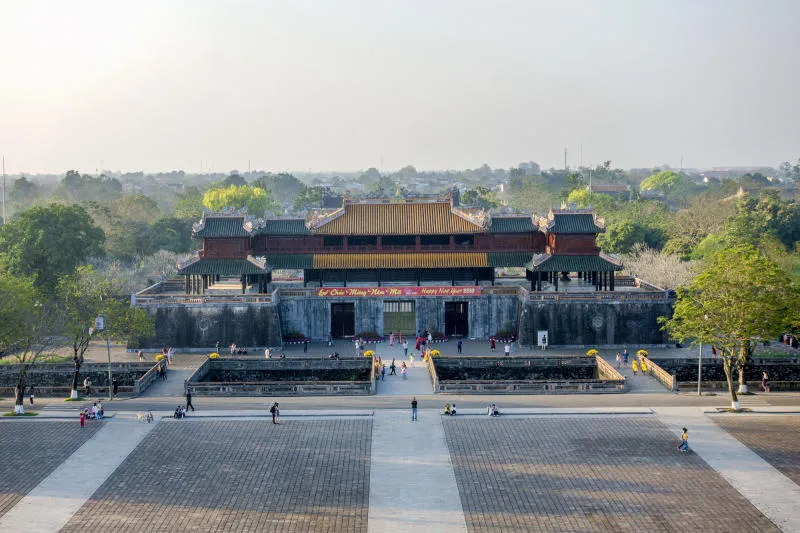
Unique Cultural and Artistic Values
The Complex of Hue Monuments is not only a tangible heritage but also embodies invaluable cultural and artistic values. Hue’s imperial architecture is a harmonious blend of traditional Vietnamese architecture and influences from Eastern architecture, creating a unique, refined, and solemn style. Structures such as the Citadel, Imperial City, mausoleums, temples, and pagodas were all built according to strict Feng Shui and aesthetic principles, reflecting the power and majesty of the Nguyen Dynasty. Beyond architecture, Hue Imperial City also preserves distinctive intangible cultural values such as Nha Nhac court music, Hue folk songs, royal festivals, and imperial cuisine, enriching the cultural identity of Vietnam.
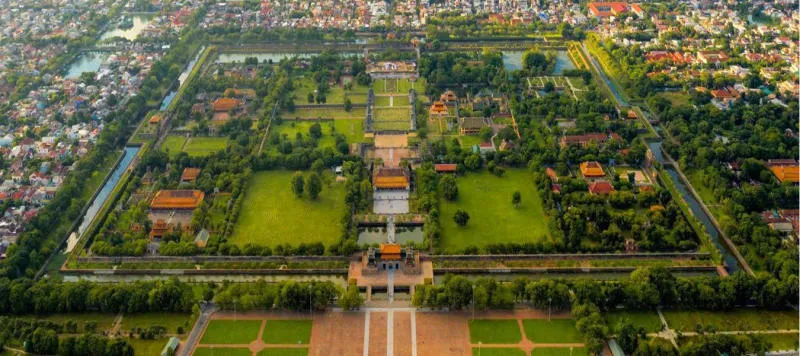
Exploring Prominent Attractions within Hue Citadel
Hue Citadel – Architectural Masterpiece by the Perfume River
Hue Citadel is an ideal starting point for exploring the Imperial City. Built on the northern bank of the Perfume River, Hue Citadel is a massive architectural complex with a system of ramparts, palaces, and magnificent temples. The Citadel was not only the administrative and political center of the Nguyen Dynasty but also a symbol of the dynasty’s power and longevity. Strolling through the Citadel, you will admire unique architectural works, learn about the history and culture of the Nguyen Dynasty, and feel the peaceful, ancient atmosphere of Hue Imperial City.
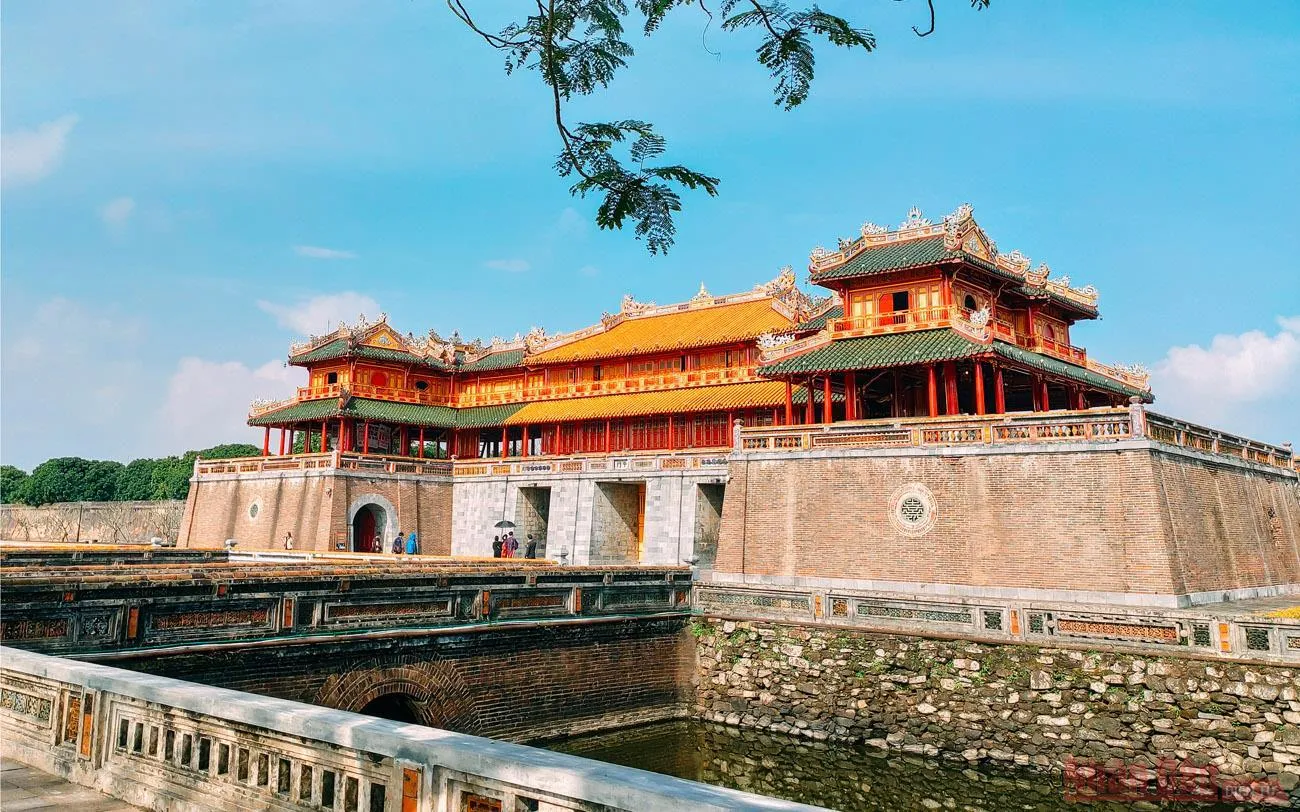
Hue Flag Tower (Ky Dai) – Witness of History
Located in the heart of Hue Citadel, the Flag Tower stands tall as a historical landmark. The Flag Tower was not only a place to fly the royal flag but also a unique architectural structure with profound symbolic meaning. With three towering tiers, the Flag Tower is an ideal spot to admire the panoramic view of Hue Citadel and the poetic Perfume River. Standing at the foot of the Flag Tower, you will feel the solemnity and majesty of this structure and envision the historical events that have taken place here.
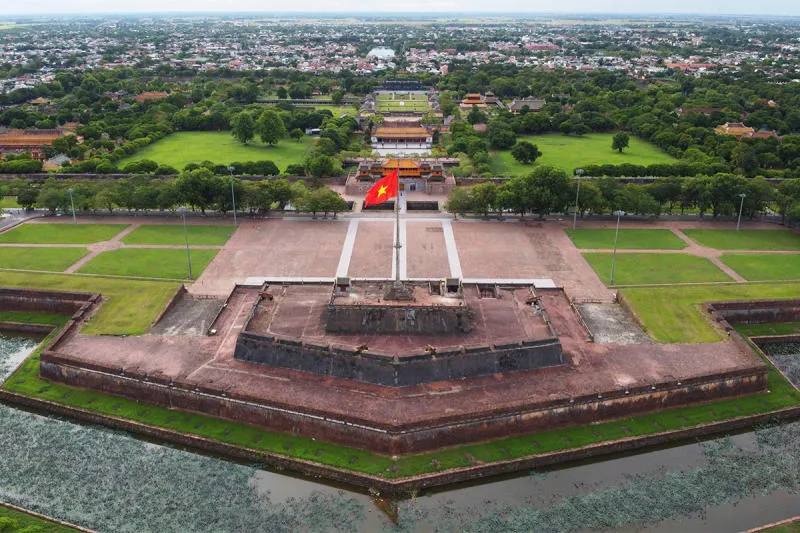
Quoc Tu Giam (Royal College) of Hue – Cradle of National Talents
Quoc Tu Giam of Hue, Vietnam’s first university during the Nguyen Dynasty, is a significant historical and cultural relic within the Complex of Hue Monuments. It was once a high-level education center, nurturing countless talents for the nation. Visiting Quoc Tu Giam, you will learn about the history of Vietnamese education, admire the ancient architecture of the school, and feel the solemn, academic atmosphere of an ancient university.
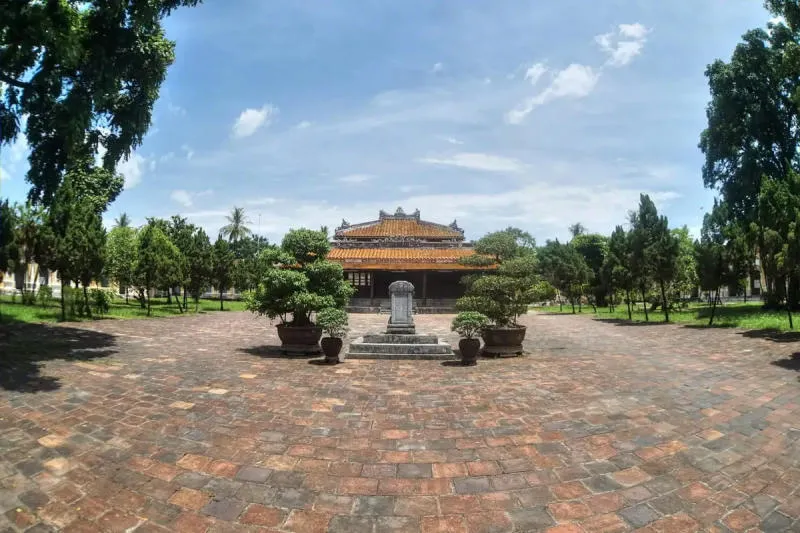
Hue Royal Antiquities Museum – Treasury of Imperial Art
Hue Royal Antiquities Museum is a place to display and preserve valuable artworks of the Nguyen Dynasty. The museum is located in Long An Palace, a stunning architectural work within the Imperial City of Hue. Here, you will admire hundreds of unique artifacts such as porcelain, bronze ware, wooden items, enamel, paintings, royal costumes, and more. These artifacts are not only of high artistic value but also help you better understand the life, culture, and history of the ancient Hue imperial court.
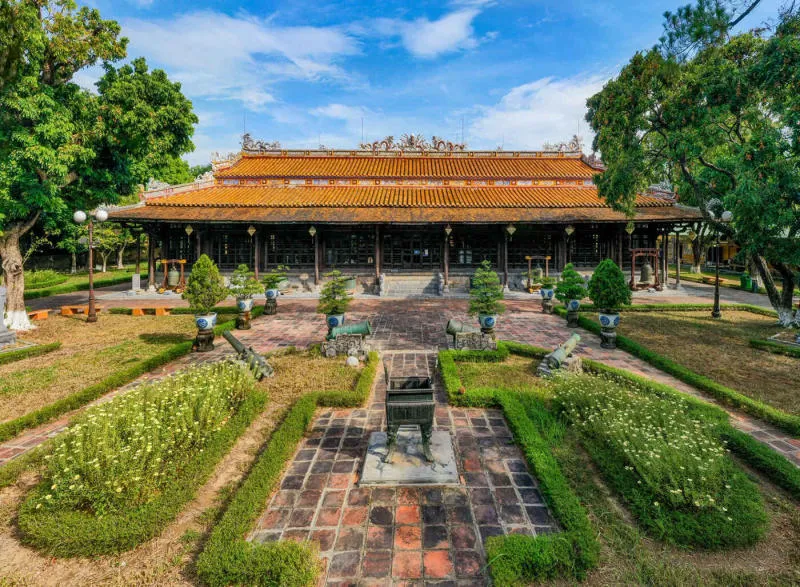
Hue Imperial City – Power Center of the Nguyen Dynasty
Hue Imperial City, located within the Citadel, is the most important area of Hue Imperial City. This was the residence and workplace of the king and royal family, as well as the political, cultural, and religious center of the Nguyen Dynasty. The Imperial City is surrounded by a solid wall system and features many magnificent palaces, temples, and pavilions such as Ngo Mon Gate, Thai Hoa Palace, Forbidden Purple City, The Mieu Temple, Hung Mieu Temple, Trieu Mieu Temple, Thai Mieu Temple, Dien Tho Palace, Truong Sanh Palace, Duyet Thi Duong Theatre, and more. Exploring Hue Imperial City, you will step into the ancient imperial world, feeling the luxury, splendor, and majesty of the Nguyen Dynasty.
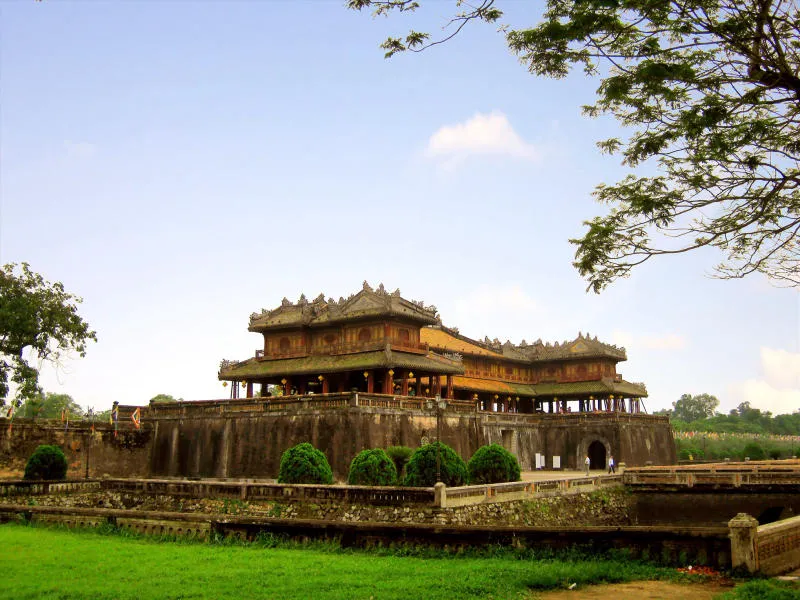
Journey to Discover Relics Outside Hue Citadel
Mausoleums of Nguyen Emperors – Unique Architecture and Natural Landscapes
Outside Hue Citadel is a system of mausoleums of the Nguyen emperors, each mausoleum bearing a unique architectural style, reflecting the personality and preferences of each emperor. Famous mausoleums such as Gia Long Mausoleum, Minh Mang Mausoleum, Tu Duc Mausoleum, Khai Dinh Mausoleum, etc., are all elaborately and meticulously built, harmoniously combining architecture and natural landscapes. Visiting the mausoleums, you will not only admire the unique architecture but also immerse yourself in the peaceful, tranquil space of the mountains and forests, feeling the intersection between humans and nature.
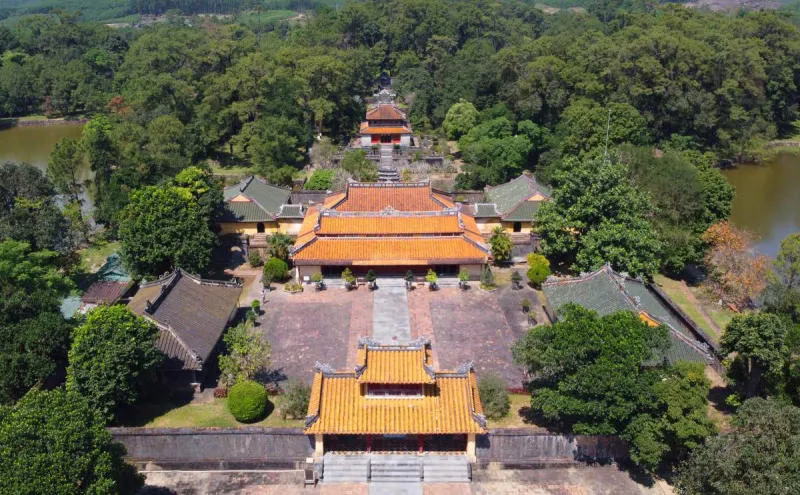
Tran Binh Dai – Ancient Fortress by the Perfume River
Tran Binh Dai, also known as Mang Ca Fortress, is an ancient fortress located in the Northeast of Hue Citadel. The fortress was built in the early 19th century to protect the Citadel from the sea. Tran Binh Dai is not only a military structure but also a unique historical architectural relic. Visiting Tran Binh Dai, you will learn about Vietnamese military history, admire the ancient fortress architecture, and admire the panoramic view of the Perfume River and the surrounding area.

Phu Van Lau Pavilion – Vermilion Pavilion by the Perfume River
Phu Van Lau Pavilion, a graceful architectural work located on the bank of the Perfume River, was once the place to post important edicts of the court and the venue for cultural and historical events. Phu Van Lau Pavilion is not only a beautiful architectural work but also a cultural symbol of Hue Imperial City. Standing at Phu Van Lau, you can admire the poetic Perfume River, the graceful Trang Tien Bridge, and feel the romantic, lyrical atmosphere of Hue.
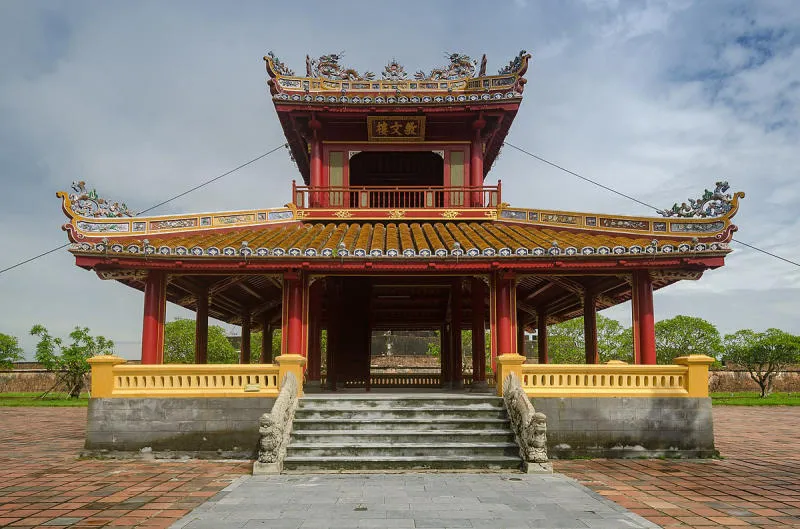
Van Thanh Mieu (Temple of Literature) of Hue – Symbol of Studious Tradition
Van Thanh Mieu of Hue is a place to worship Confucius and the sages of Confucianism, and also to honor the studious tradition of Hue. Van Thanh Mieu has solemn, ancient architecture with many structures such as Tam Quan Gate, Dai Thanh Mon Gate, Dai Bai Duong Hall, etc. Visiting Van Thanh Mieu, you will learn about the history of Confucianism in Vietnam, feel the solemn, tranquil atmosphere, and discover profound cultural and educational values.
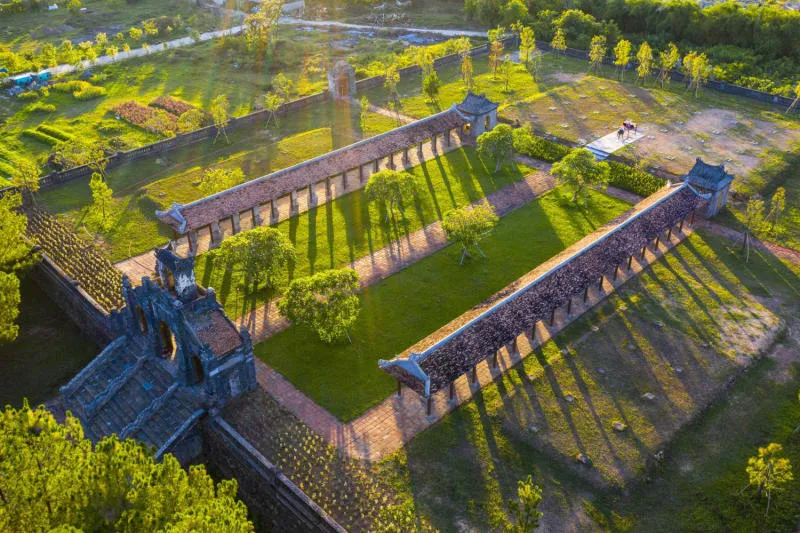
Dan Nam Giao (Esplanade of Sacrifice to Heaven) – Place of Heaven Worship for Emperors
Dan Nam Giao is an important historical and religious relic of Hue Imperial City. This place was once where the Nguyen emperors performed rituals to worship Heaven, praying for national peace and prosperity. Dan Nam Giao is built on a high hill, with unique architecture, deeply imbued with spiritual elements. Visiting Dan Nam Giao, you will learn about the Heaven worship rituals of the Nguyen Dynasty, admire the unique architecture of the esplanade, and admire the panoramic view of Hue Imperial City from above.
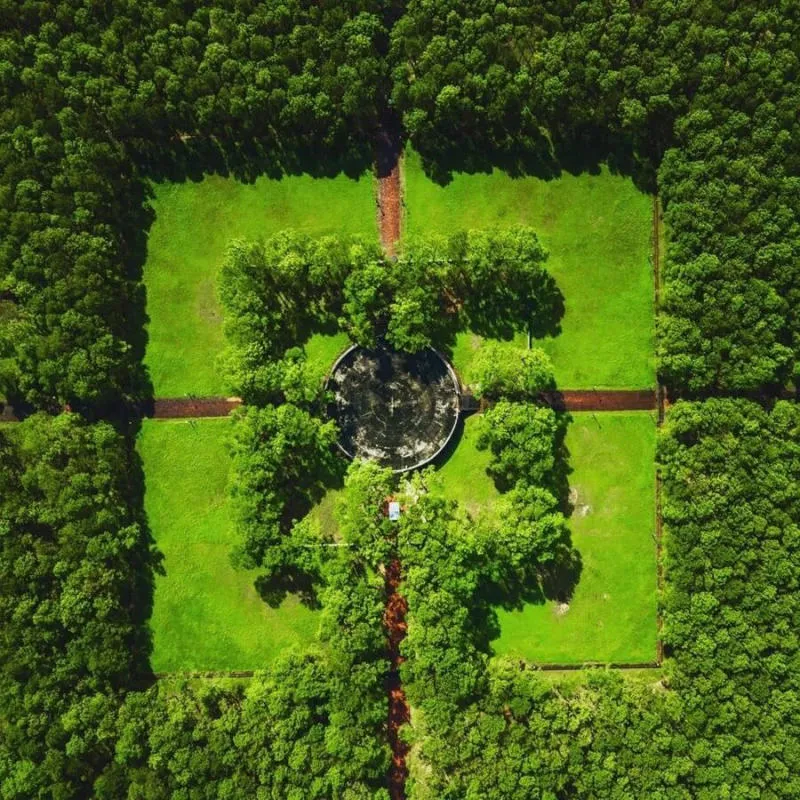
Thien Mu Pagoda – Ancient and Sacred Pagoda
Thien Mu Pagoda, located on Ha Khe hill on the left bank of the Perfume River, is one of the oldest and most famous pagodas in Hue. The pagoda was built in the early 17th century and is associated with many historical stories and legends. Thien Mu Pagoda is not only an important spiritual site but also a famous scenic spot in Hue. Visiting Thien Mu Pagoda, you will admire the ancient, serene pagoda architecture, admire the poetic Perfume River, and learn about the history and Buddhist culture in Hue.
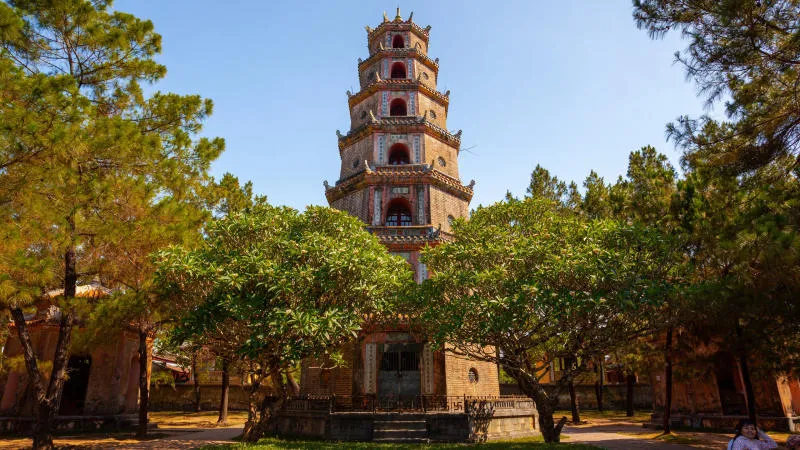
Conclusion
The journey to explore the Complex of Hue Monuments is a trip back in time, taking you back to a glorious historical period of the nation and admiring invaluable cultural and architectural heritages. Each structure and relic in Hue Imperial City contains its own stories and unique cultural and historical values. Come to Hue, to feel the ancient, tranquil beauty and discover the interesting things that Hue Imperial City offers. Surely, this trip will leave you with deep impressions and unforgettable memories of the beautiful and culturally rich ancient capital.